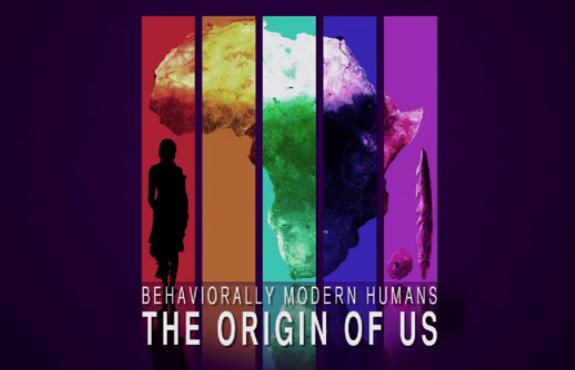Behaviorally Modern Humans: The Origin of Us
Current evidence indicates that multiple upright-walking, tool-dependent species in the genus Homo co-existed in the Old World (Africa, Asia and Europe) for most of the last 2 million years. Yet only one surviving species of Homo exists today. Even 100,000 years ago, at least four Homo species shared the Old World. One of the enduring questions of human origins is when, where and how we "Behaviorally Modern Humans" emerged and why and how we eventually replaced all the other human-like species. In the past, competing theories have generated much controversy and even some acrimonious debate. This symposium set aside such theories and debates and took a fresh look at the situation today. The focus was on critical examination of the available evidence from multiple sources, including climate proxies, geology, fossils, archaeology, linguistics, immunology, genetics and genomics, as well as evolutionary neuroscience/cognitive archaeology. While the symposium may not have come to any definitive conclusions, it offered the best interpretation of current evidence, and suggested research agendas for the future. (from carta.anthropogeny.org)
 |
1. African Climate of the Last 400,000 Years
Rick Potts suggests that the complexity of climate dynamics, and associated resource uncertainty, likely influenced the evolution of adaptive versatility in our species.
2. Fossil Record of Anatomically Modern Humans
Evidence points strongly to Africa as the major center for the genetic, physical and behavioral origins of both ancient and modern humans.
3. East African Archaeological Evidence
Apart from references to the oldest fossil hominins attributed to Homo sapiens, the East African record is often ignored in current scenarios of modern human origins in favor of the much more detailed, well-preserved and better-explored region at the southern end of the continent.
4. South African Archaeological Evidence
Lyn Wadley contends that the manufacture of compound adhesives and compound paints by 100,000 years ago in South Africa is clear evidence for modern thought processes that involve, for example, multi-tasking.
5. Interbreeding with Archaic Humans in Africa
Today there is an abundance of DNA sequence data from the entire genome of contemporary human populations, as well as from ancient DNA recovered from extinct forms of humans.
6. Relationships of Ancient African Languages
Almost all of the more than 1,000 African languages spoken today belong to just four families Afroasiatic, Niger-Kordofanian, Nilo-Saharan, and Khoesan.
7. Evidence for the Spread of Modern Humans
Ofer Bar-Yosef briefly summarizes the archaeological evidence for the dispersals of modern humans into Eurasia.
8. Interbreeding with Archaic Humans Outside Africa
Neanderthals and Denisovans are the closest extinct ancestors of modern humans. High-quality genome sequence data is now available from both and has revealed multiple instances of admixture between these archaic hominins and the ancestors of currently living humans.
9. Stone Tools and Cognition: Lessons from Australia
What is cognition? Can we learn anything from brains? What was the cognitive ability of the Last Common Ancestor? And, how can we learn from stone tools?
| Related Links |
| Walking with Cavemen This is a four-part BBC documentary series narrated by Robert Winston, about the story of human evolution from Australopithecus afarensis to Homo sapiens. |
| Ancient DNA and Human Evolution Ancient DNA data have provided unprecedented insights into the recent history of our species. |
| Origins of Genus Homo This explores evidence bearing on the emergence of our genus, focusing on possible antecedents to Homo, changes in diet and body form as Australopithecus evolved toward Homo, ancient species within the genus, and evolutionary processes. |
| The Evolution of Human Biodiversity This is a series of videos on the evolution of human biodiversity from CARTA (Center for Academic Research & Training in Anthropogeny). |
| The Upright Ape: Bipedalism and Human Origins Why are we the only two-legged creature to develop an exclusively upright gait? And what did it mean to the development of the human species? |
| Origins of Us: Human Anatomy and Evolution We are all members of a very special species. Whilst our anatomy and physiology is undoubtedly that of an ape, we have done things that no other ape can do, and become the most successful ape on the planet. |
| Origins of Us This is a BBC documentary series presented by Dr. Alice Roberts, showing how we evolved away from our ape cousins to become the adaptable, successful species we are today. |
| Prehistoric Autopsy This is a BBC documentary series presented by Professor Alice Roberts and Dr. George McGavin, taking us on an evolutionary journey to meet three of our ancient ancestors - Neanderthals, Homo Erectus, and Lucy. |
| Becoming Human: Unearthing Our Earliest Ancestors This is a three-part NOVA's documentary series investigating the recent discoveries transforming our understanding of our human origins. |
| The Great Human Odyssey This is a three-part CBC documentary series hosted by anthropologist Niobe Thompson, exploring the unlikely survival and the miraculous emergence of Homo sapiens as the world's only global species. |